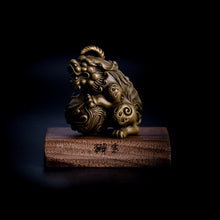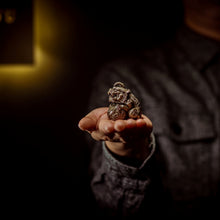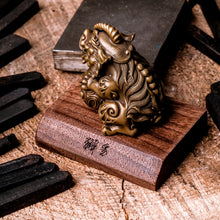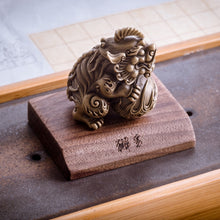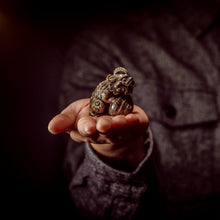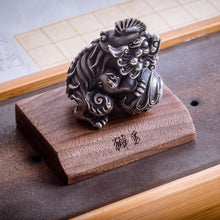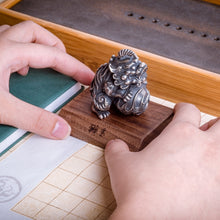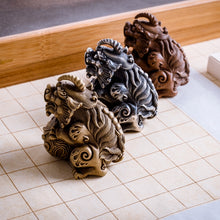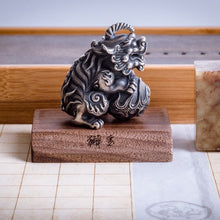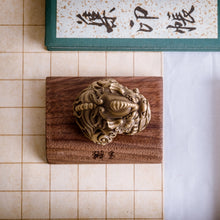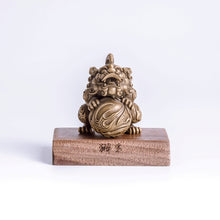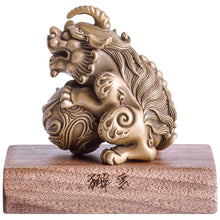
The Haetae (Korean, often spelled haitai or haechi) or Xiezhi (Chinese) is a legendary creature in Chinese and Korean mythology.
According to the legend, Emperor Shun's minister Gao Yao had a mythical creature called the zhi, which he used in criminal proceedings, whenever he was in doubt. The animal instinctively knew the innocent from the guilty; it butted the latter with its horn.
Mentions of the xiezhi in Chinese literature can be traced back to the Han Dynasty, where it is described by the scholar Yang Fu as a "passive aggressive righteous beast, which rams the wrongful party when it sees a fight, and bites the wrongful party when it hears an argument". It is described in the Shuowen Jiezi as being "a strong beast with one horn; in ancient times. It settled disputes by directly ramming the party at fault".
The xiezhi was used as a symbol of justice and law. The Censorate of the Ming and Qing eras, who were responsible for the monitoring of the civil service, wore the xiezhi as a badge of office. Similarly, military policemen of the Republic of China wear badges bearing the xiezhi, and it is engraved on the gavels in the law courts of the People's Republic of China.
According to Korean records, Haetae's body is muscular, and shaped like a lion and has a horn on its forehead. It has a bell in its neck, and the body is covered with sharp scales. It lives in the frontier areas of Manchuria.
In ancient Korea, Haetae sculptures were used in architecture during the early Joseon dynasty, as their image was trusted to be able to protect Hanyang (now Seoul) from natural disasters and to give law and order among the populace. Seoul city has officially used Haechi (origin of Haetae) as the symbol of Seoul since 2009.
In English, it is called "the unicorn-lion" or "an omniscient mythical beast".
Dimensions - 40 X 56 mm / 1.57 X 2.20 inch
Weight - 290 g
Wooden stand - 70 X 50 X 18 mm / 2.76 X 1.97 X 0.71 inch
















